When artist Christine Sioco moved to Boracay in November last year, she packed her 12 favorite brushes, 12 tubes of paint and sketch books.
She also brought with her a whole lot of experience in being a woman artist that has survived clinical depression, working as an OFW in the Middle East, teaching art to kids, working in a theme park, and doing conceptual art.
When she came back to the Philippines in 2023, after four years in Dubai and one year in Abu Dhabi, she worked remotely as a product designer and customer rep for a US company that produced Christmas cards among other products.
Christine (or Tin to friends and colleagues) is the third artist-in-residence—and the first woman—at Crimson Resort Boracay, a program that lasts from six months to a year. The residency gives artists the chance to immerse themselves in the local community and foreign cultures to enrich their work with fresh insights and inspiration.
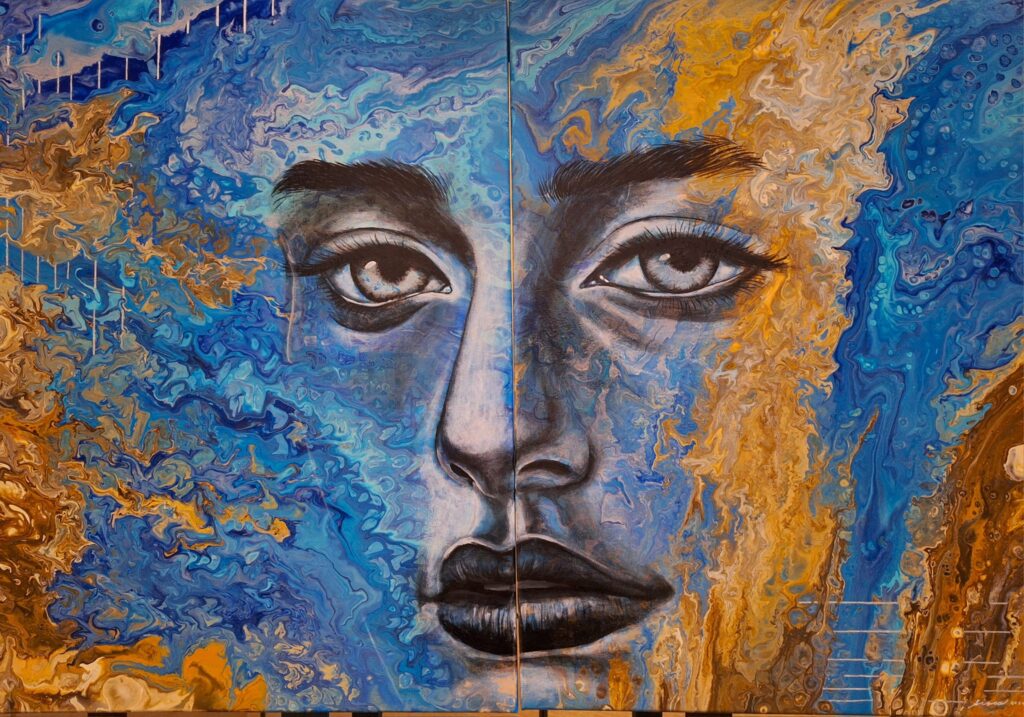
And, of course, the chance to sell their work. On the resort’s side, Tin holds art workshops to help guests discover their artistic inclinations. Often, that discovery comes as a surprise and is accompanied by unbidden emotions.
The artist-in-residence program was started by Crimson general manager Patrick Manthe in 2021, who also launched in the same year the resort’s Arts in Youth program, which sponsors young artists in their artistic education.
Maybe the duality has nothing to do with symbolism, and everything to do with the two sides of one life—her life. The burden of depression and the relief of healing, two parts that let her pick up her brushes every day and paint subjects like these.
Last Friday, in celebration of International Women’s Day, Tin opened her second solo show (the first was in Manila in 2016). On display at Crimson Resort Boracay until March 31, Inamorata is comprised of 12 paintings depicting women subjects, all having their origins in history, religion, myth and her imagination.
Like the meaning of inamorata—a person who is loved by someone or who loves someone—each woman on the canvas is “flawed, fragile, wronged, wounded, healed.”
Art tends to do that. It does things to you, around you. It has the kind of power that changes minds or sways opinions and opens eyes. The celebrated abstractionist Mark Rothko famously said, “The fact that a lot of people break down and cry when confronted with my pictures shows that I can communicate those basic human emotions.”
To the unappreciative eye, Rothko’s massive canvases are merely blocks of color; to one with an open mind, they are entire worlds of pain, pleasure, sadness, rebellion, joy.
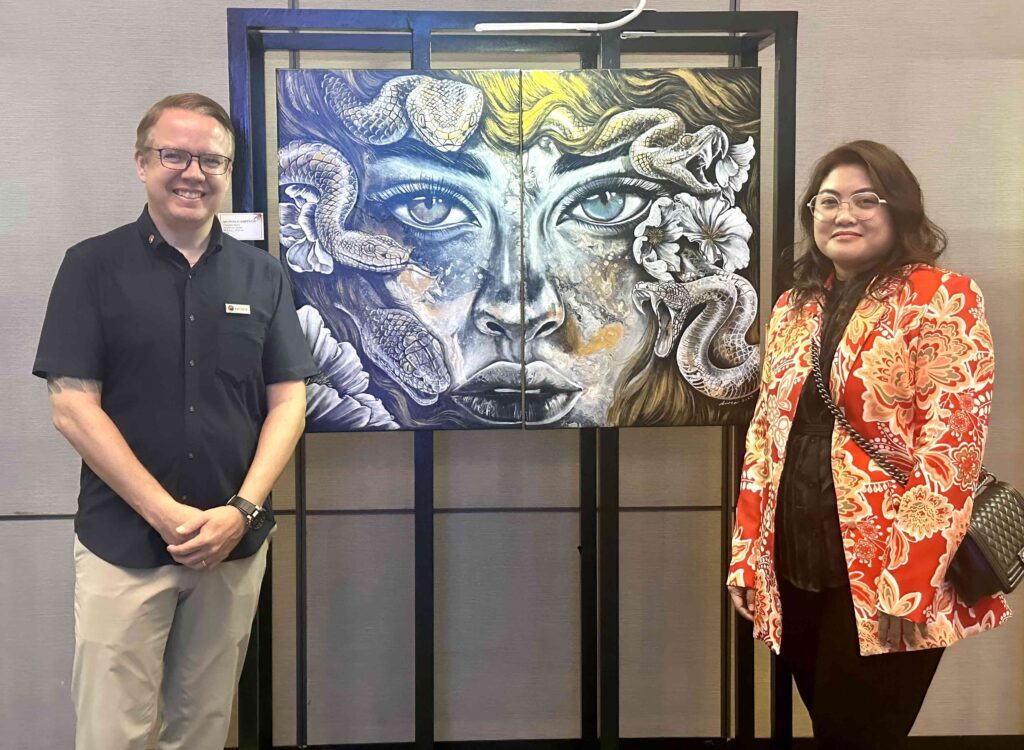
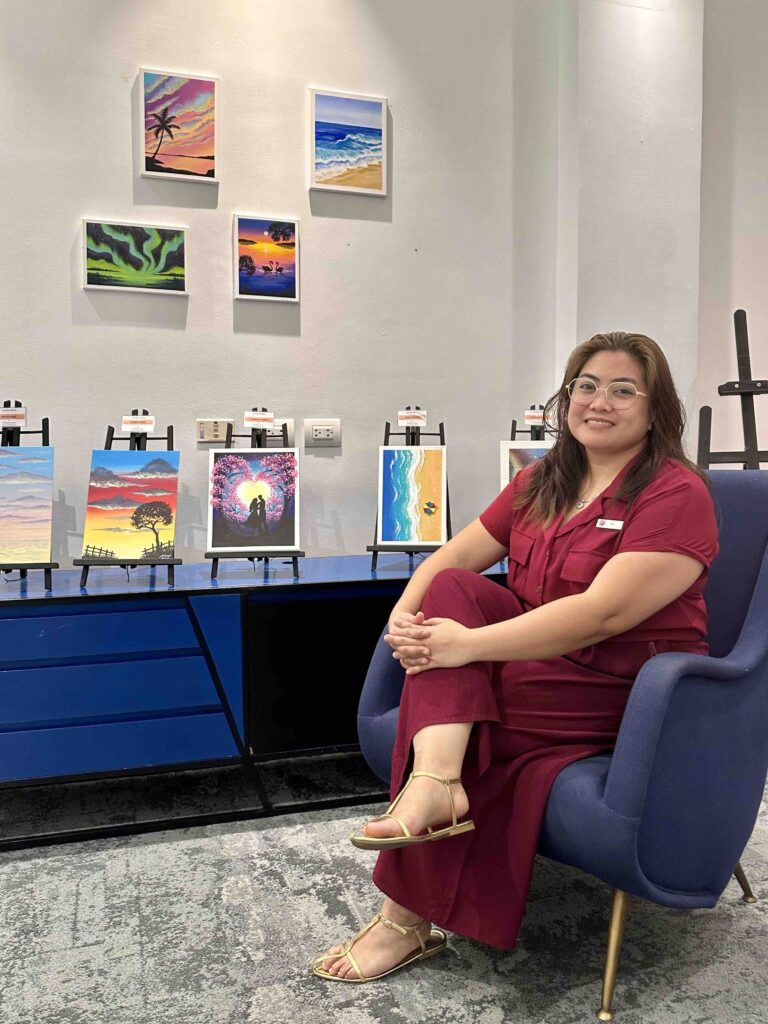
Art—creating it, watching others create it, and consuming it—saved Tin from what seemed for a long time a depression that wouldn’t go away. But thanks to therapy, meds and art, she found that place where she could sit still and not be consumed by emotions and dark thoughts, but to just be.
Heterochromia, diptychs
Many of the women on Tin’s canvases seem like they’re looking back at the viewer with the same interest as they are gazed upon. Wide-eyed with expressions that range from mysterious to confrontational and imploring, many are heterochromatic or having two differently colored eyes.
There is a sense of duality in them, a struggle between beginning and ending, a representation of what we know and what we don’t see.
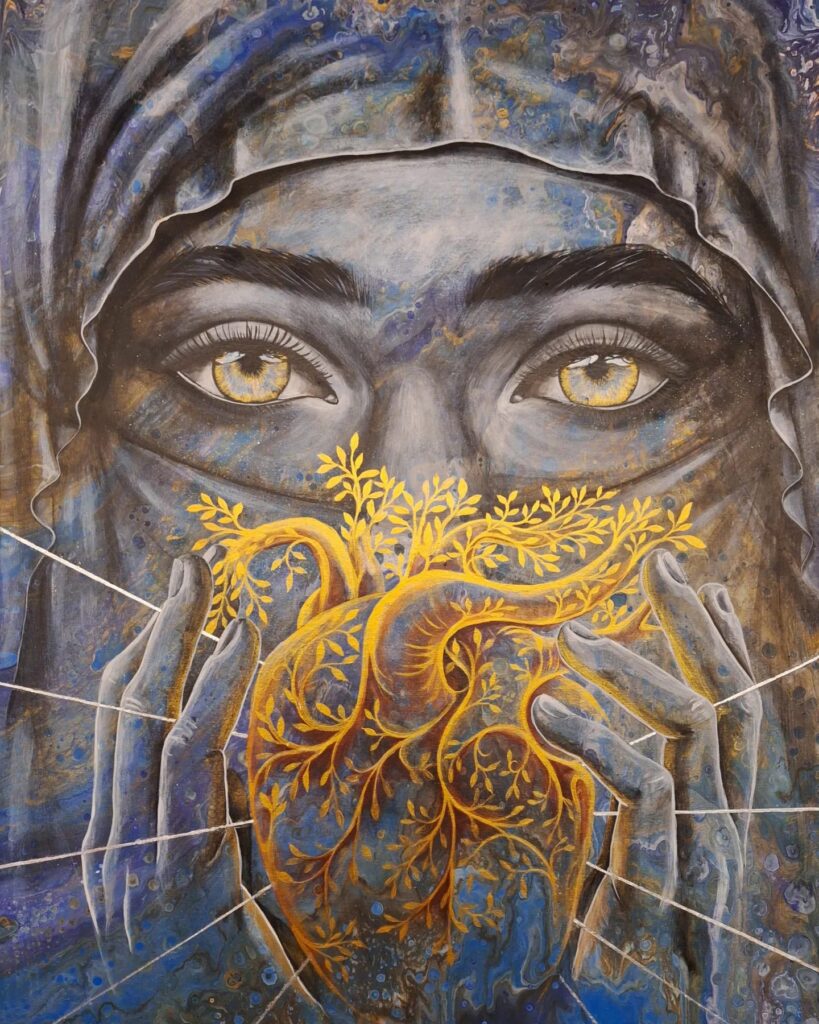
Two central figures from the Bible are portrayed in her canvases. Delilah, the Philistine in Samson’s last love story, is in the throes of love. Bribed to cut off his hair and therefore his strength, Delilah is a treacherous woman but here, come to life with Tin’s brushstrokes, she is a woman in love (or pretending to be). We all know how this story ends or how Delilah would be regarded for eternity—and I can’t help but think, “Well done, woman! That’s a proper biblical villain.”
And then there is the painting “Maryam” or the Virgin Mary as she is called in Arabic. Tin portrays her within the context of Islam, her hair and mouth hidden, and only her piercing amber and blue eyes showing. Having lived a total of five years in the Middle East, Tin got used to seeing Mary this way, “so different from how we see her in the Christian world.”
Islam, however, does hold Maryam as an important character in the Quran—for her piety, devotion to God, and the miraculous birth of her son, the prophet Isa (Jesus Christ).
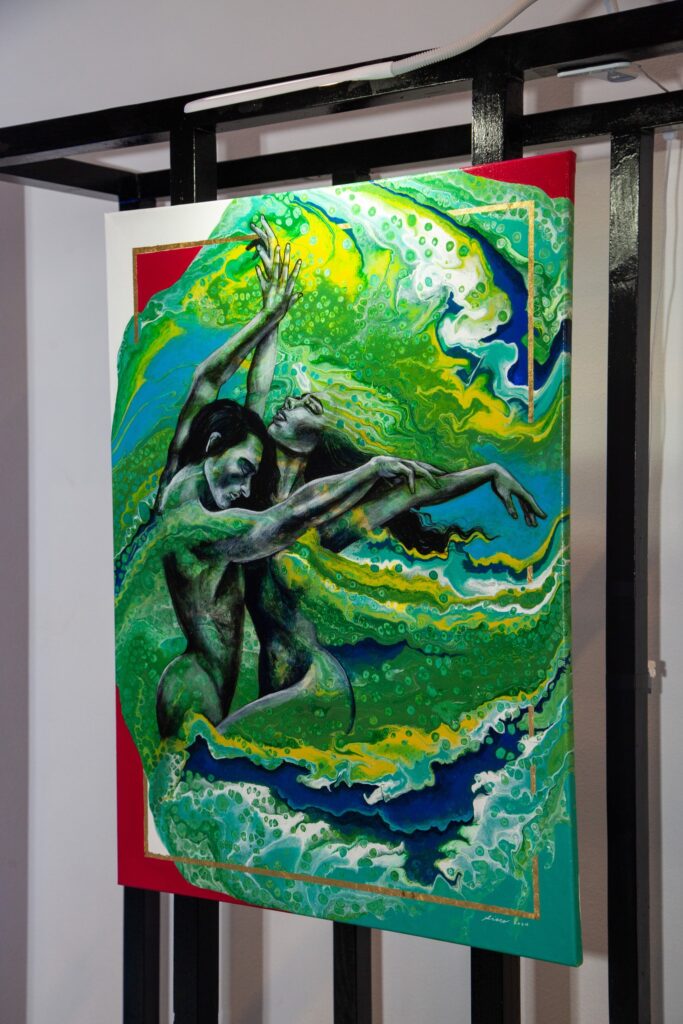
From Greek mythology comes “Medusa,” the woman punished by the goddess Athena by turning her hair into serpents and giving her a gaze that turned anyone who looked at her into stone.
I didn’t ask Tin how she regarded Medusa, whether she saw her as a symbol of rage so huge it alters reality or transformation like a molting snake—or both. But that this subject is a diptych, literally dividing Medusa in two, seems to substantiate the duality. The blue-eyed half of Medusa has two snakes with their fangs out, ready to strike; the brown-eyed half of Medusa has three bigger snakes slithering across her face, almost like guard dogs, protective and alert.
Maybe the duality has nothing to do with symbolism, and everything to do with the two sides of one life—her life. The burden of depression and the relief of healing, two parts that let her pick up her brushes every day and paint subjects like these.
From UAE to Boracay
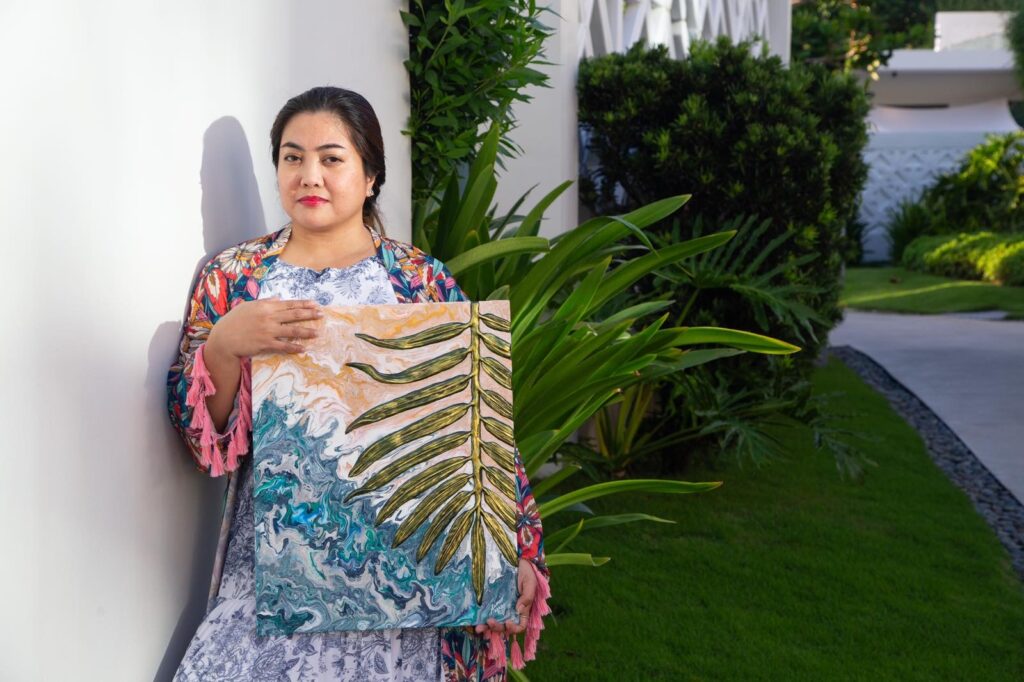
When she was growing up, Tin had two aunties whose work gave her the opportunity to practice drawing. The first was a hair dresser who owned a salon; the second was a seamstress.
When her mother would leave her at her aunt’s salon, Tin would gaze at the posters of hairstyles and makeup lining the walls, and she would draw portraits. The second aunt would sketch dresses for her clients, and from her Tin learned to draw the human body.
These were her early teachers. By the time she was old enough to go to school, her mother who had always supported her inclination toward drawing (Tin filled the walls of their house in Oriental Mindoro with doodles starting when she was three), she entered Tin at the Philippine High School for the Arts In Mt. Makiling, a specialized public school focused on art education.
“When you study there, the pressure is worse than college,” she says. “In the morning you study general subjects like math; in the afternoon you dedicate yourself to visual arts, dance, voice, writing, music, theater. You lead a double life as a student and an artist.” From PHSA, she went to TUP in Manila to finish her degree in fine arts.
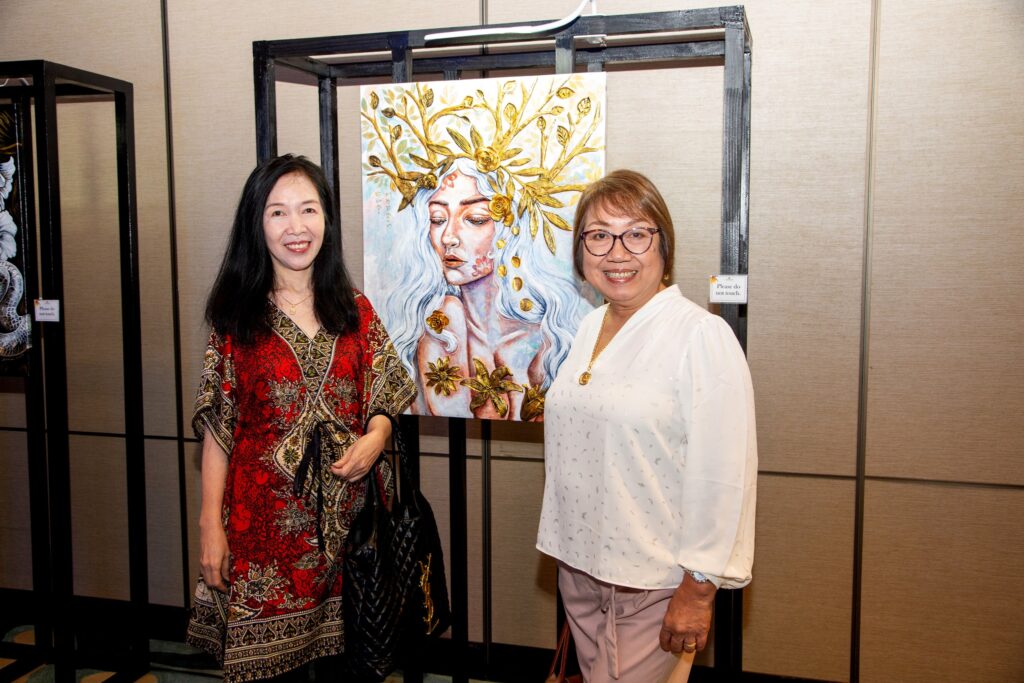


All of her jobs, she says, were art related. She didn’t experience the “starving artist” life, but it had its challenges, especially being away from home. In the UAE, she worked in a mall where she taught kids how to paint, she did commission work, she designed prints on textile used by Pierre Cardin and Gianfranco Ferre. At Warner Bros. and Seaworld, she worked as a “scenic artist,” which means she was part of the crew that would repaint walls that were chipped or faded when the visitors had gone home for the night, and the maintenance people were sweeping away the popcorn and snacks on the floor.
But her work in a children’s entertainment center in Dubai gave her the discipline and patience to deal with people from all cultures. This is what Crimson Resort Boracay sports and leisure manager Mariel Asuncion immediately saw when Tin applied for the residency.
Mariel says, “Last year we got the most number of applicants at around 60. Most of them were art teachers, and the others were good too but their style of painting was not very family oriented, which is what Crimson guests are looking for. Tin’s experience in teaching kids and adults in Dubai gave her the advantage.”
Mariel interviewed and shortlisted the applicants to five, then GM Patrick interviewed them and made the final choice for the resort’s third artist in residence.
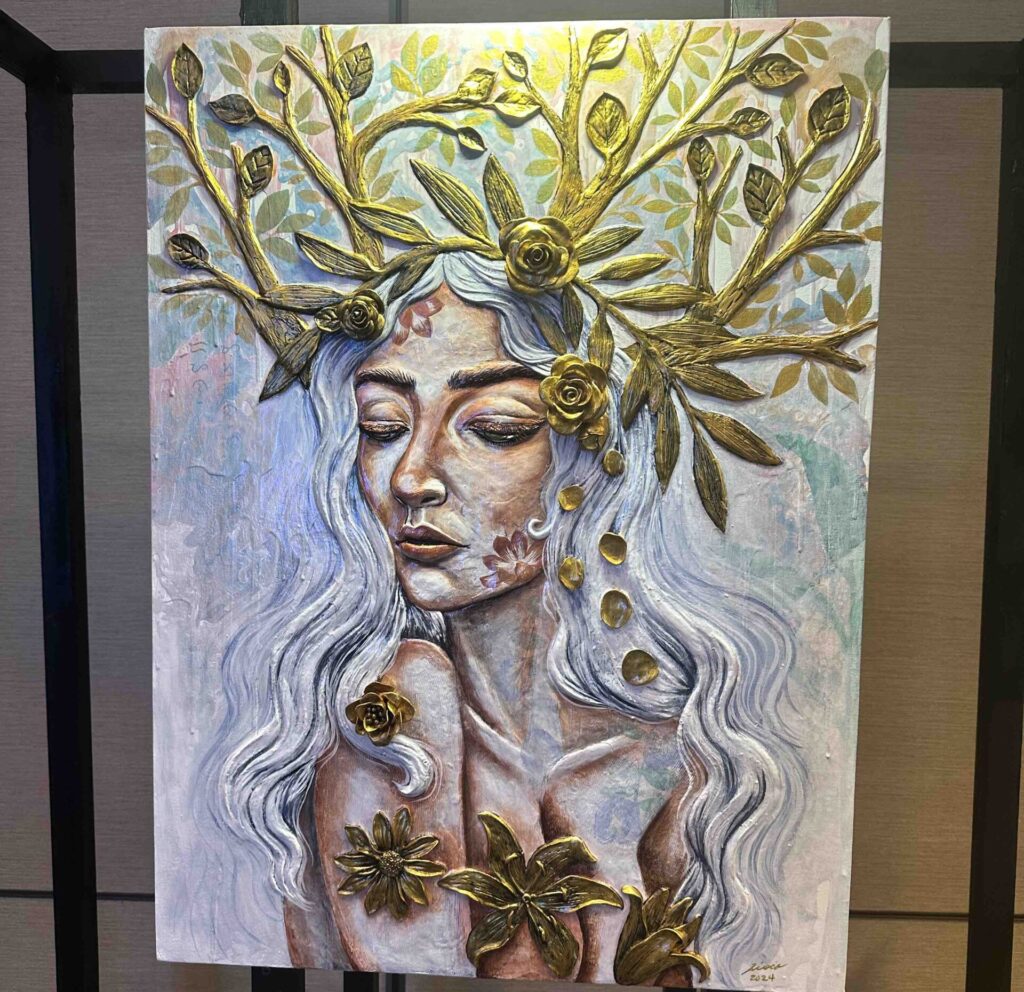


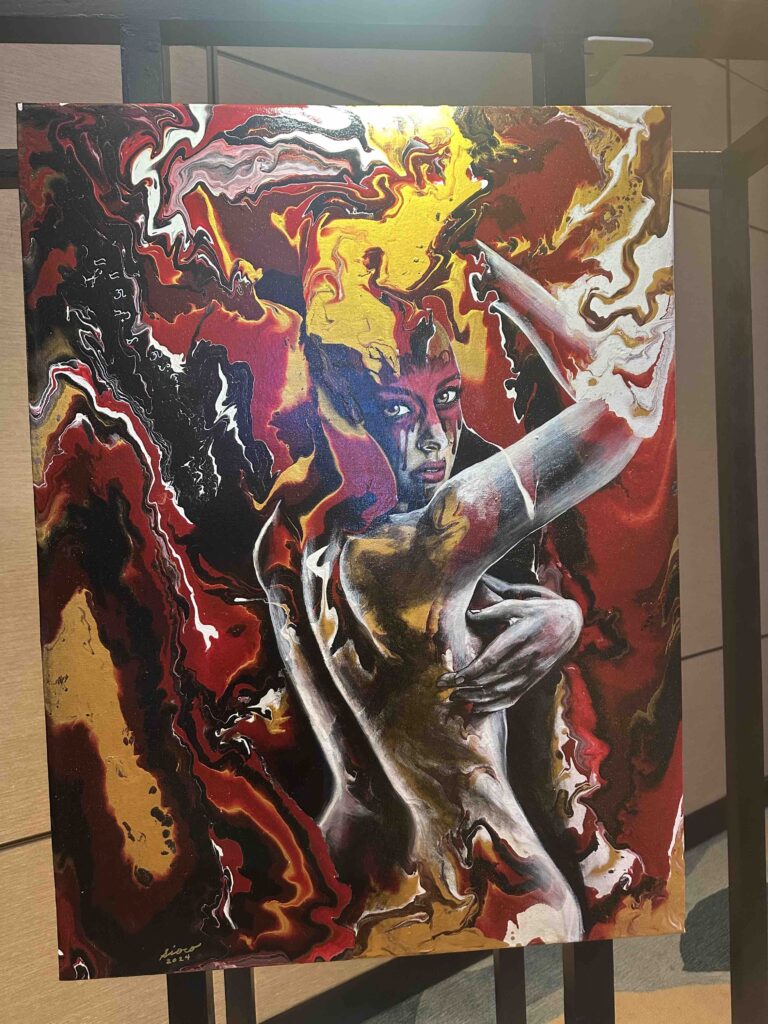


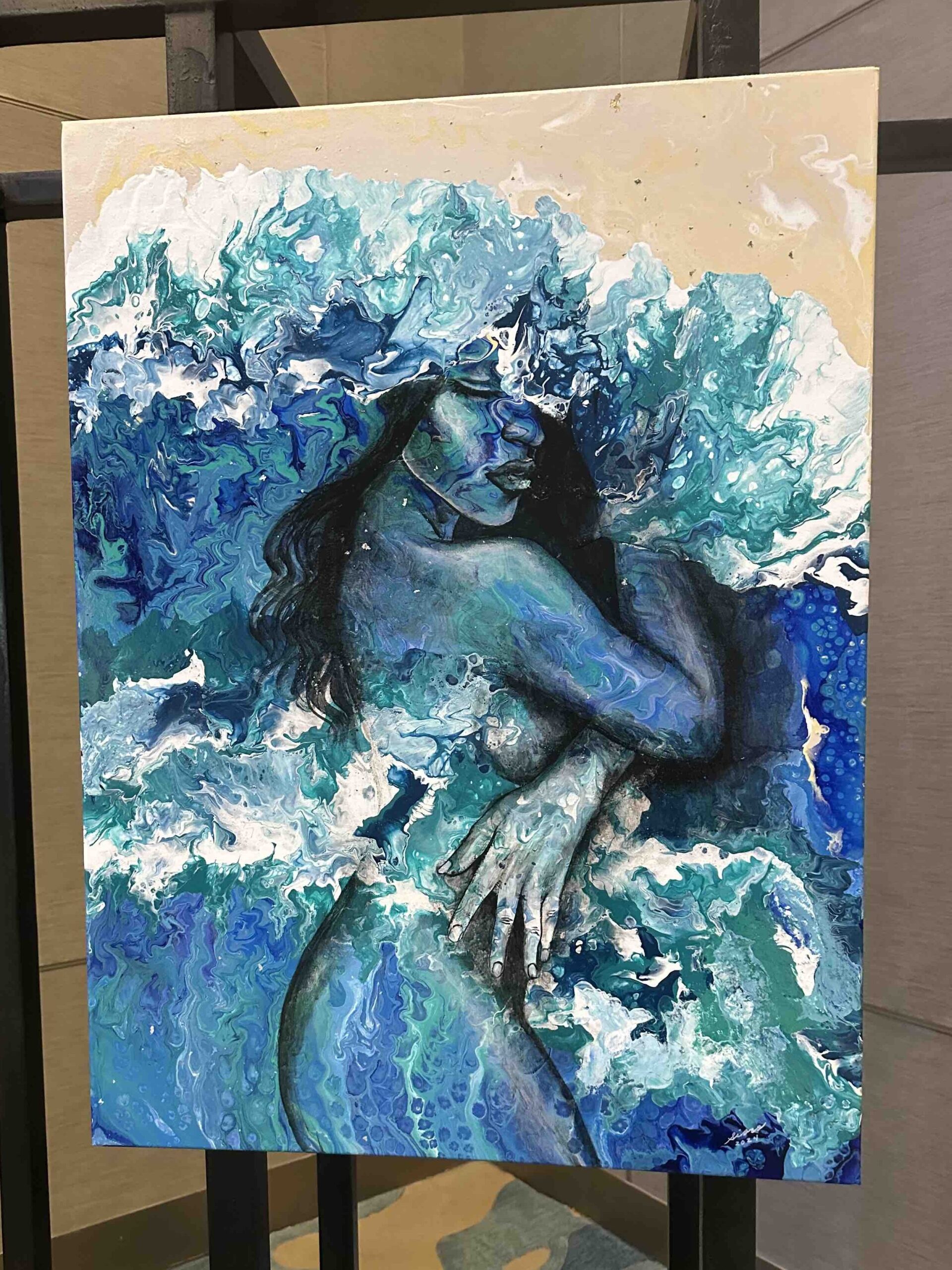


Ten months of being back in the Philippines, it feels like her stint at Crimson is a well-deserved break from the uncertainties of living in the UAE and losing her job during the pandemic. Tin says that in Boracay she has all the time to paint for herself—to go to the beach when she wakes up before beginning her work in the Art Room.
Patrick says that the paintings she produced in the weeks leading to the exhibit were snapped up by guests that they had to close the Art Room temporarily to let Tin finish the 12 paintings for the exhibit. With Tin as the artist in residence, Crimson’s Art Room feels and looks so different from the time of the two male artists before her.
She says it feels good that people like her work and are buying it. It feels empowering. Art can be a full-time job that pays well—and that’s empowerment, she says.
Tin is sitting in the restaurant that overlooks the beach, the sun bouncing off the white peaks on the blue water, when she tells me she doesn’t need to look far to know that “art can heal, it can be therapy.”
Christine Sioco’s Inamorata exhibit is ongoing until March 31 at the Coral Ballroom of Crimson Resort Boracay.




